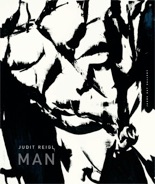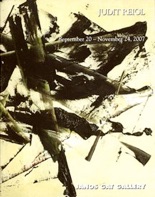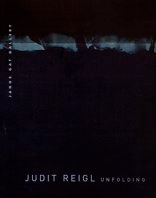JUDIT REIGL
JUDIT REIGL (b.1923) escaped from her native Hungary in March 1950, made her way across Europe in three months, and settled in Paris. Moved by Reigl’s 1950 painting They Have an Unquenchable Thirst for the Infinite, André Breton declared the work a Surrealist masterpiece and presented the artist’s first solo exhibition in Paris in November 1954. Although Reigl never abandoned her “total” automatic writing – which she defined as the “engagement of mental automatism complemented by corporeal movement” – she left the Surrealist group following the exhibition, unwilling to submit to any authority. Reigl’s works were a genuine artistic revolution, chronologically parallel to the Abstract Expressionist movement in the United States, except that she followed another kind of logic, one that was poetic throughout (and Surrealist in tone in its earliest years).
The oeuvre of Judit Reigl offers a new lens through which to consider the course of European painting in the second half of the twentieth century. Judit Reigl has worked in series, without corrections and discarding many paintings: out of three or four thousand completed in a nearly sixty-year period, she kept perhaps four or five hundred. [After Surrealism and Automatic Writing (1951-54), Reigl completed the following series: Outburst, 1955-58; Center of Dominance, 1958-59; Guano, 1958-65; Mass Writing, 1959-65; Weightlessness, 1965-66; Man, 1966-1972; Drape/Decoding, 1973; Unfolding, 1973-80; Unfolding Continued, 1980-85; Art of the Fugue, 1980-82; Volutes, Twists, Columns, Metal, 1992-83; Hydrogen, Photon, Neutrinos, 1984-85; Entrance/Exit, 1986-88; Facing..., 1988-90; Body in the Plural,1990-92; Out, 1993-99; Priceless Body, 1999-2001; New York, September 11, 2001, 2001-2007; Unfolding Phase IV, 2008. Reigl’s works on paper, from the Surrealist drawings from 1953 to the current Bird series, most convincingly complement her still-unfolding process of painting.] While there is a clear continuity to the series – partially explained by the fact that she used the rejected canvases as the foundation of new ones – they are clearly distinct from each other, alternatively figurative and abstract, demonstrating a uncommon approach that the Parisian art world initially found difficult to accept.
In France, Judit Reigl is now acknowledged as one of the most original figures of post-World War II art. She is recognized for having discarded boundaries and rules once deemed absolute, obliterating the distinction between the front and the back of the canvas (by painting on both sides), and the antagonism between the figurative and the non-objective, while reconciling surrealism and abstraction. Her 2010 retrospective at the Nantes Museum of Fine Arts was followed by a concise survey at the Centre Pompidou, Paris, in 2012. Also in 2012, a painting from her Outburst series was included in the Guggenheim Museum’s Art of Another Kind: International Abstraction and the Guggenheim, 1949 – 1960. Reigl’s paintings are in the collections of the Tate Modern, London, the Centre Pompidou, Paris, the Museum of Fine Arts, Houston, and the Albright-Knox Art Gallery in Buffalo. In New York, her works have been acquired by the Museum of Modern Art, the Guggenheim Museum, and can be seen in the permanent collection of the Metropolitan Museum of Art. Art in America, ARTnews, Artforum, and The New York Times published glowing reviews of her exhibitions in New York (between 2007 and 2012). Judit Reigl is in her 90th year. Currently there are various efforts underway to introduce the Reigl oeuvre to the American public in major museum exhibitions.
For more information about the artist: www.judit-reigl.com









